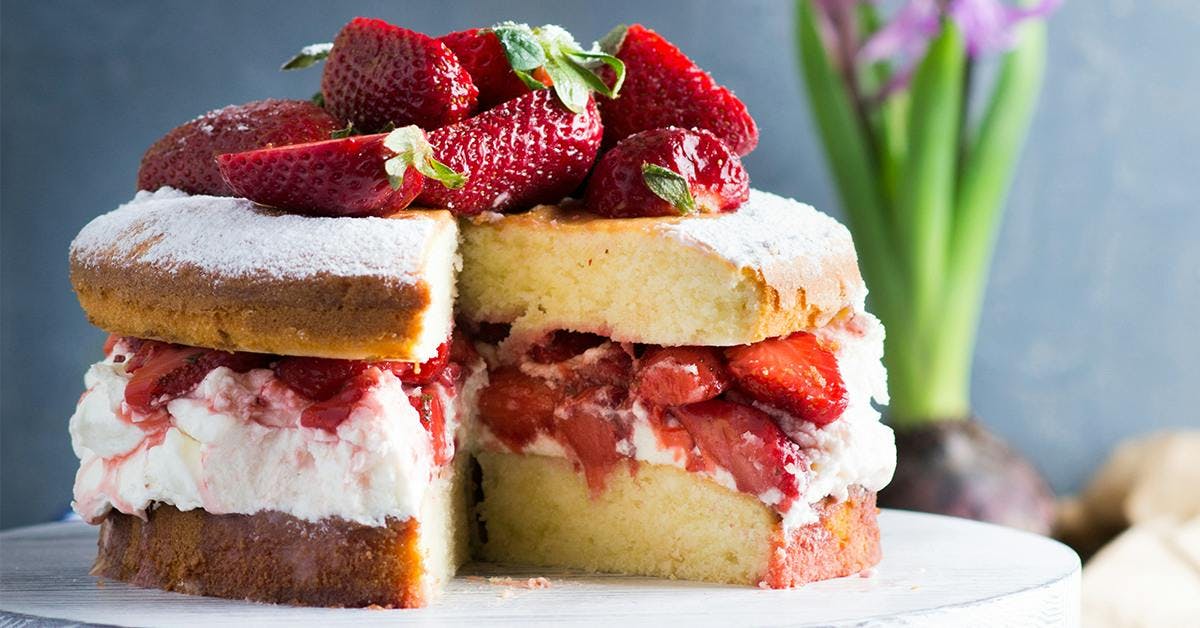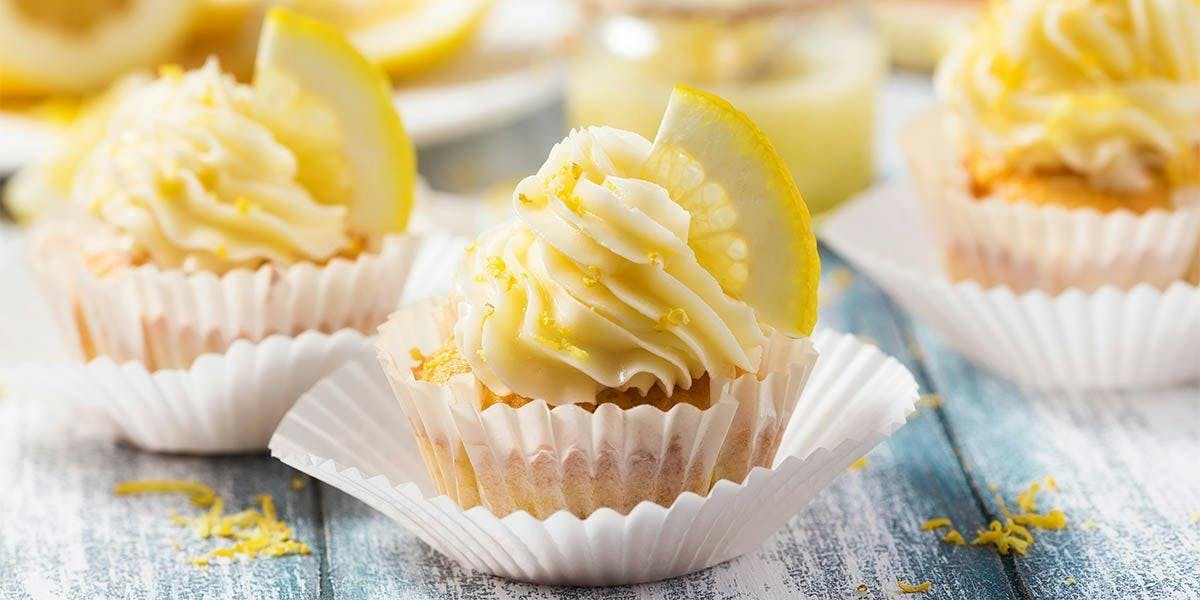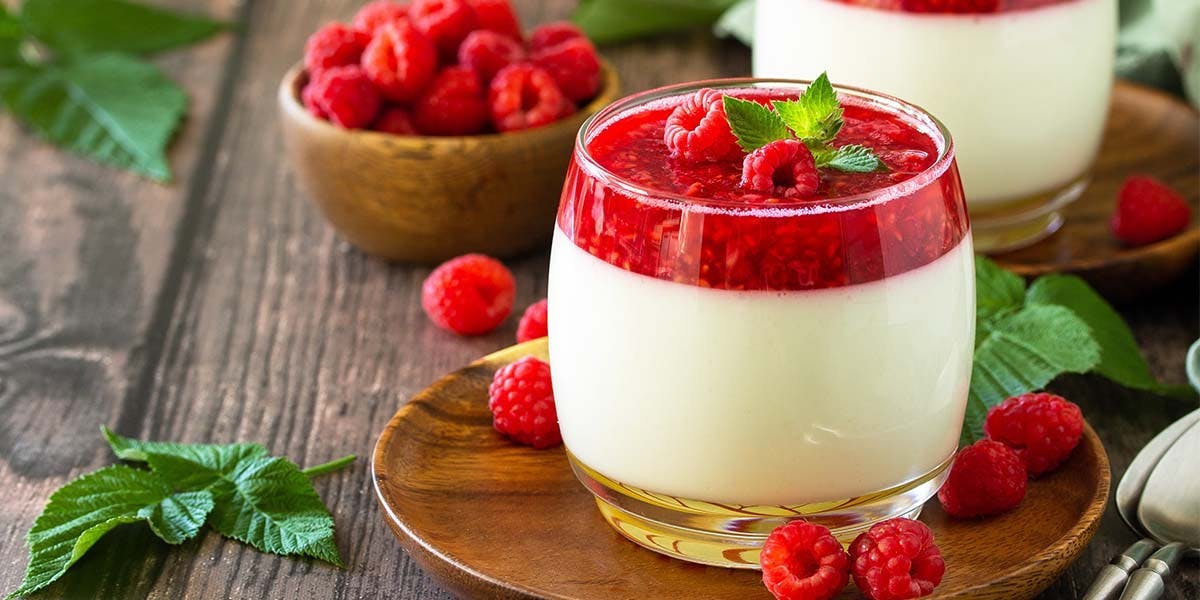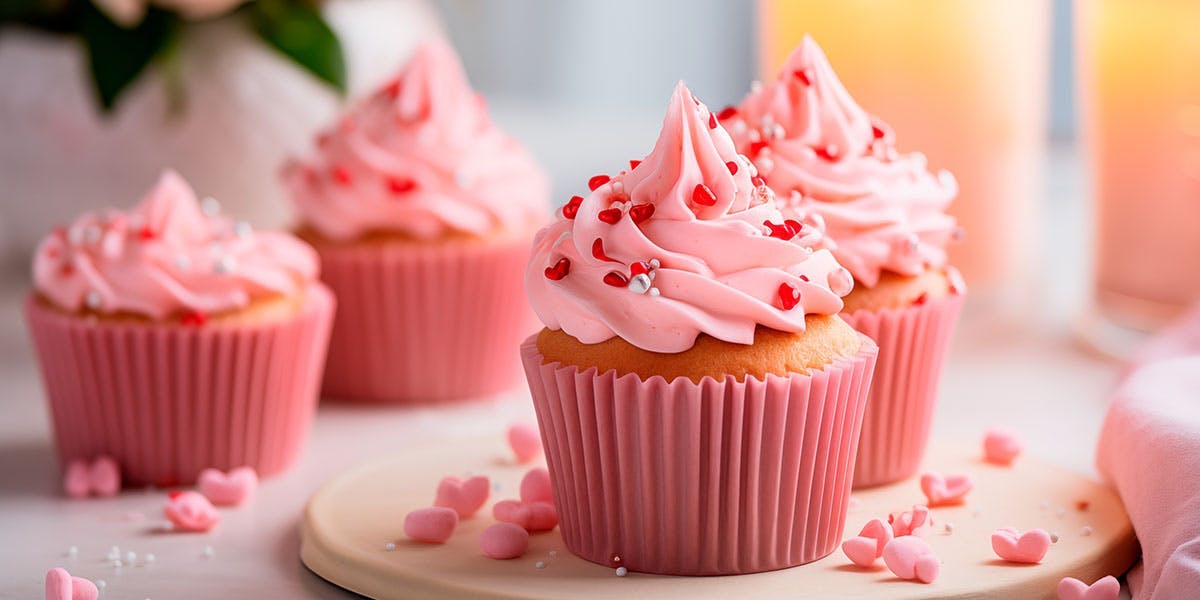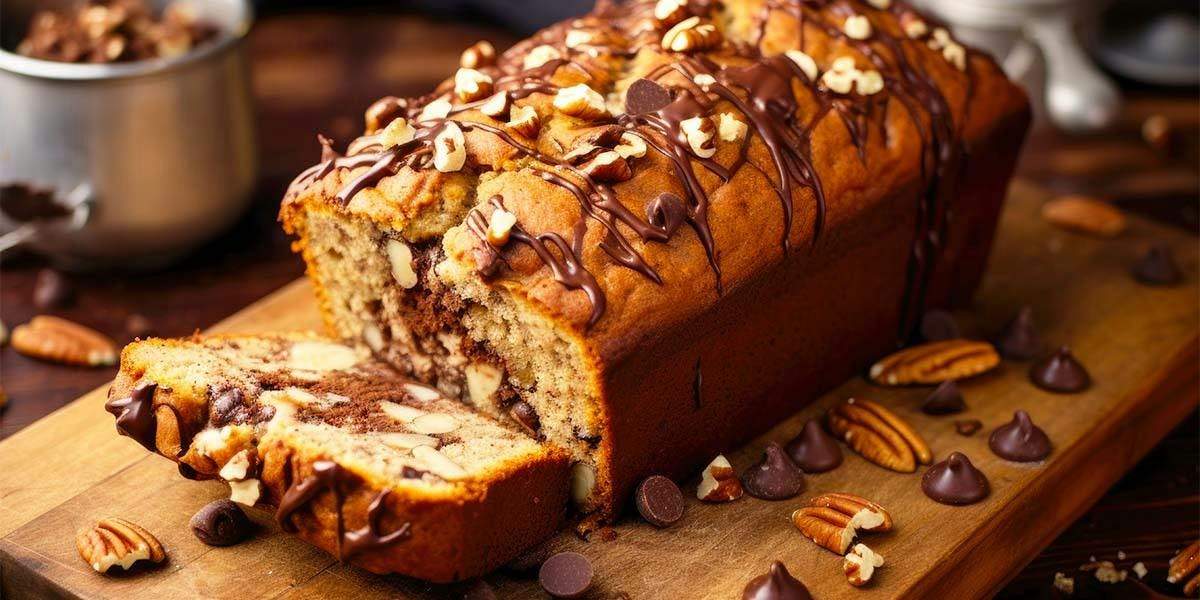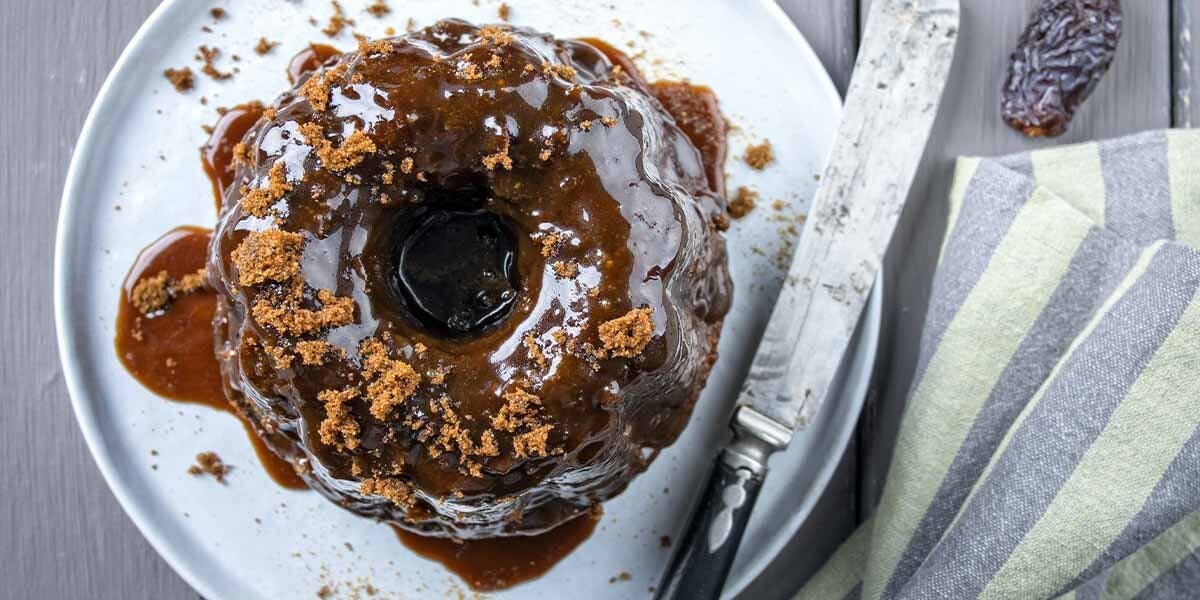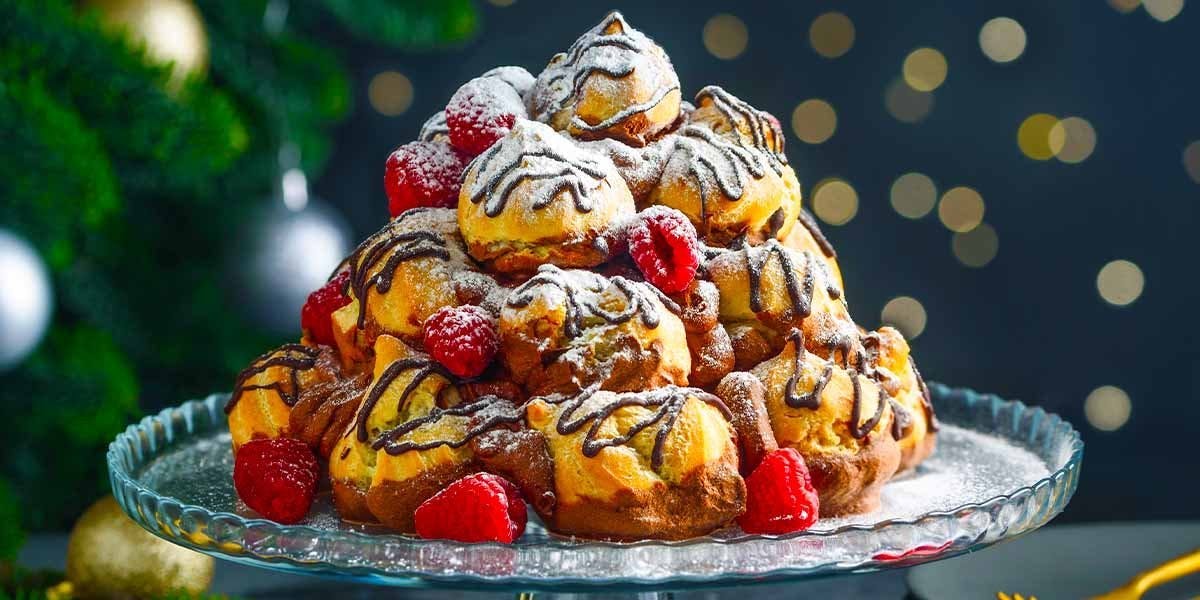
These gin-spiked Chocolate & Gingerbread Cream Profiteroles are full of festive spirit!
Few pastry deserts have that “wow factor” or say “celebration” like the glorious profiterole - especially if there is a huge pile of them for you to dive into, like the traditional tower of caramel and choux pastry known as croquembouche!
We have added a festive touch to our profiteroles by adding a good glug of gin, a drool-worthy pouring of chocolate and beautiful, zesty gingerbread flavours in the form of gingerbread-flavoured gin liqueur.
This recipe will guide you through the best ways to make choux pastry, pastry cream and a chocolate coating. Our mouths are watering already! But first, let’s take a look at the basics…
Why is choux pastry called choux?
Known as “pâte à choux” in French, choux (pronounced “shoo”) pastry is said to have been invented in 1540 by the private chef of Florence’s Catherine de Medici, chef Pantanelli. Because the pastry would rise into odd shapes as it baked it earned the name choux, which is French for “cabbage”.
What is pastry cream?
Pastry cream (“creme patisserie” in French) is a custard that is thickened with starch, like plain flour or cornflour. It is commonly used as filling for profiteroles, éclairs and other French pastries. Pastry cream, like other custards, is traditionally flavoured with vanilla but we are using Pennington’s Gingerbread Liqueur, from Pennington’s Spirits & Liqueurs to flavour the pastry cream in this recipe.
Why are they called profiteroles?
The word “profiterole” refers to a small choux pastry bun filled with cream or pastry cream. The word is thought to have origins in 17th century French, meaning a small reward or “profit”.
Is a profiterole a cream puff?
Profiteroles and cream puffs are the same pastry by different names. Both refer to choux pastry filled with cream or pastry cream. Some people believe that a profiterole should be filled with ice cream and find a difference between the two there, but in most cases, you should expect to receive the same pastry whether you say “cream puff” or “profiteroles”.
Boozy Chocolate & Gingerbread Cream Profiteroles
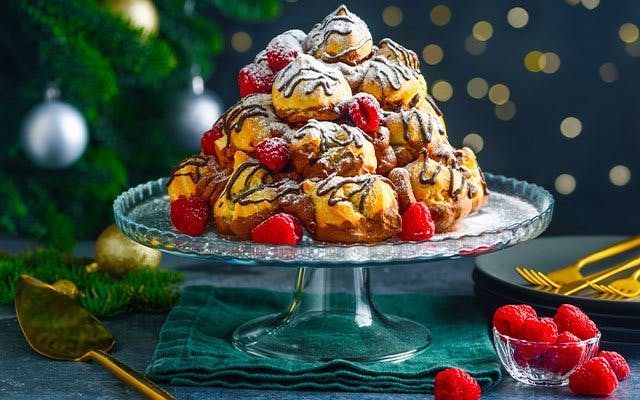
(Makes around 18 profiteroles)
For the pastry cream:
430ml double cream
3 egg yolks
75g caster sugar
3 tbsp cornflour
30g cubed butter, unsalted
4 tbsp Pennington’s Gingerbread Liqueur
For the choux pastry:
130g plain flour, sifted
115g butter, unsalted
225ml water
3 eggs (have 1 or 2 spare eggs to hand)
15g caster sugar
Salt, a pinch
1 tsp ground ginger
1/2 tsp ground nutmeg
For the chocolate coating:
150g chocolate, at least 70%
Salt, a pinch
For the pastry cream:
- In a thick-bottomed saucepan bring 230ml of the cream to a soft boil, in the meantime whisk the caster sugar and cornflour into the egg yolks until the mixture is slightly lighter in colour and glossy.
- Pour some of the hot cream into the egg yolk mixture to temper the liquids, stirring continually. Add the rest of the hot cream, stir to combine and then pour the mixture back into the saucepan.
- Put the saucepan on medium-high heat and stir continually until the mixture thickens and is bubbling. Remove from the heat and stir in the butter and gingerbread liqueur. Pour the mixture through a fine sieve into a bowl. Place cling film against the surface of the pastry cream leaving no gaps or air bubbles (this stops the skin from forming). Leave in the fridge to chill.
- Whip the remaining 200ml of cream to soft peaks and fold into the cooled pastry cream mixture until fully incorporated. Place the cling film over the mixture again and return to the fridge.
In a thick-bottomed saucepan bring 230ml of the cream to a soft boil, in the meantime whisk the caster sugar and cornflour into the egg yolks until the mixture is slightly lighter in colour and glossy.
Pour some of the hot cream into the egg yolk mixture to temper the liquids, stirring continually. Add the rest of the hot cream, stir to combine and then pour the mixture back into the saucepan.
Put the saucepan on medium-high heat and stir continually until the mixture thickens and is bubbling. Remove from the heat and stir in the butter and gingerbread liqueur. Pour the mixture through a fine sieve into a bowl. Place cling film against the surface of the pastry cream leaving no gaps or air bubbles (this stops the skin from forming). Leave in the fridge to chill.
Whip the remaining 200ml of cream to soft peaks and fold into the cooled pastry cream mixture until fully incorporated. Place the cling film over the mixture again and return to the fridge.
For the choux pastry:
- Preheat your oven to 180c. In a thick-bottomed saucepan on medium-high heat, add the water and the butter and bring to a simmer. Once all of the butter is melted add the flour, sugar, salt, ginger and nutmeg. Stir the mixture together until it forms a dough. Keep stirring the dough in the pan until a film of residue forms on the bottom. The aim of this process is to remove as much moisture from the choux pastry as possible.
2. Place the dough in a bowl and leave it to cool to room temperature at least. Add the eggs one at a time, fully incorporating each egg before adding the next. Keep adding eggs until you have achieved a smooth, glossy paste. A good way to tell if the paste is the right consistency is to dip a utensil into it and pull it out. Turn the utensil upward and the pastry on the tip should flop over slightly into a wave shape. (It may take more or less than three eggs to achieve this consistency, so it’s important to go with one egg at a time and test after each one).
3. Add the pasty to a piping bag (a spoon can be used if you don’t have a piping bag) and add dollops of the pastry to a greaseproof paper-lined baking tray. Each portion should be around the diameter of a 50p coin. Be sure to leave enough space for each profiterole to expand. Wet your finger with water and smooth over any pointy peaks. Bake the pastry in the oven for around 30 minutes or until the pastry is expanded and golden. Remove from the oven and pierce the bases of the pastries before placing each choux bun back on the tray upside down. Return to the oven and turn the heat off. They are ready to use once fully cooled.
Preheat your oven to 180c. In a thick-bottomed saucepan on medium-high heat, add the water and the butter and bring to a simmer. Once all of the butter is melted add the flour, sugar, salt, ginger and nutmeg. Stir the mixture together until it forms a dough. Keep stirring the dough in the pan until a film of residue forms on the bottom. The aim of this process is to remove as much moisture from the choux pastry as possible.
2. Place the dough in a bowl and leave it to cool to room temperature at least. Add the eggs one at a time, fully incorporating each egg before adding the next. Keep adding eggs until you have achieved a smooth, glossy paste. A good way to tell if the paste is the right consistency is to dip a utensil into it and pull it out. Turn the utensil upward and the pastry on the tip should flop over slightly into a wave shape. (It may take more or less than three eggs to achieve this consistency, so it’s important to go with one egg at a time and test after each one).
3. Add the pasty to a piping bag (a spoon can be used if you don’t have a piping bag) and add dollops of the pastry to a greaseproof paper-lined baking tray. Each portion should be around the diameter of a 50p coin. Be sure to leave enough space for each profiterole to expand. Wet your finger with water and smooth over any pointy peaks. Bake the pastry in the oven for around 30 minutes or until the pastry is expanded and golden. Remove from the oven and pierce the bases of the pastries before placing each choux bun back on the tray upside down. Return to the oven and turn the heat off. They are ready to use once fully cooled.
Filling the choux pastry:
- Once the choux pastry has fully cooled, poke a small hole in the base of each one.
- Pour the pastry cream into a piping bag and pipe the cream into the pastry through the hole until the pastry is bulging but not bursting.
Once the choux pastry has fully cooled, poke a small hole in the base of each one.
Pour the pastry cream into a piping bag and pipe the cream into the pastry through the hole until the pastry is bulging but not bursting.
For the chocolate coating:
- Place a heat-proof bowl over boiling water in a saucepan, making sure the water doesn’t touch the bottom of the bowl.
- Chop the chocolate into small, even-sized pieces and place them in the bowl. Turn the heat off the stove allowing the residual steam from the water to gently melt the chocolate.
- Dip the profiteroles in the chocolate cream-hole-side-down so the chocolate covers the hole. Allow the chocolate to set before using.
Place a heat-proof bowl over boiling water in a saucepan, making sure the water doesn’t touch the bottom of the bowl.
Chop the chocolate into small, even-sized pieces and place them in the bowl. Turn the heat off the stove allowing the residual steam from the water to gently melt the chocolate.
Dip the profiteroles in the chocolate cream-hole-side-down so the chocolate covers the hole. Allow the chocolate to set before using.
To serve, pile your profiteroles up on a big serving dish or cake stand and drizzle over any remaining chocolate. Icing sugar and raspberries make for great garnishes. Enjoy!
